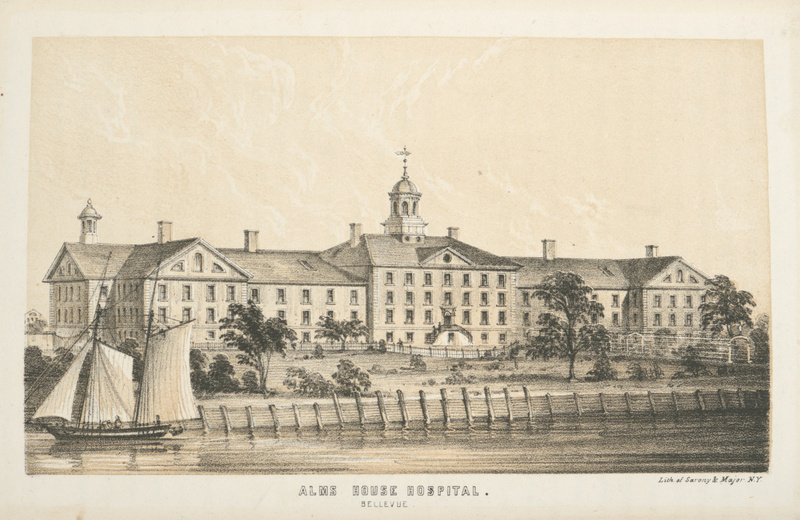2. Bellevue, the nation’s first public hospital, traces its origins to NYC’s first almshouse

Bellevue Hospital traces its origins to a two-story brick building that stood in what is now City Hall Park. The building housed the city’s first permanent almshouse, which provided charitable housing to poorer residents. The ailing poor would move to almshouses once it became clear they would wither away from their disease; wealthier New Yorkers could more easily get doctors to come directly to their homes. With the development of more sanitary and advanced medical practices, hospitals, where all patients could go and get treatment, became all the more common. Ultimately, Bellevue became the first public hospital in the nation.
Bellevue began to employ faculty and medical students from Columbia University College of Physicians and Surgeons around 1787. Columbia maintained its presence at the hospital until it was restructured in 1968. The present-day Bellevue Hospital was built on the previous Belle Vue Farm along the East River, which had been used to quarantine yellow fever patients as it was a few miles north of most homes. The hospital got its current name in 1824, around the time when it became better known on a national scale.





